Yame Bonbori Festival(八女ぼんぼりまつり) in Yame City, Fukuoka Prefecture is being held from February 11th to March 21st.
Izuka Doll's Festival(いいづか雛のまつり) in Izuka City(飯塚市), Fukuoka Prefecture is being from February 11th to March 21st.
Boxed Hina dolls called Hako-bina(箱雛) were made in Chikugo area including Chikugo-Yoshii(筑後吉井), Yame(八女) in Kyushu Region. Some people say it started when wealthy people brought hina dolls home from Kyoto after placing them in a box and displayed boxed dolls in the Edo Period.
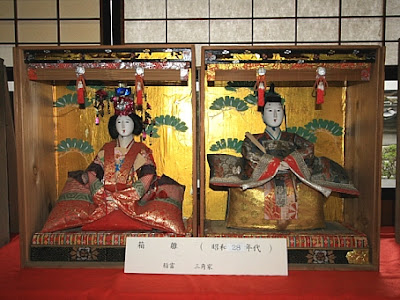 |
| Photo by Yokaphoto.net Hako-bina made in 1953 at the Yame festival |
 |
| Photo by Yokaphoto.net Hako-bina made in 1892 at the Yame festival |
 |
| Photo by Yokaphoto.net Hako-bina made in the Taisyo Period(1912-1926) at the Yame festival |
 |
| Photo by Yokaphoto.net Hako-bina at the Chikugo-Yoshii festival |
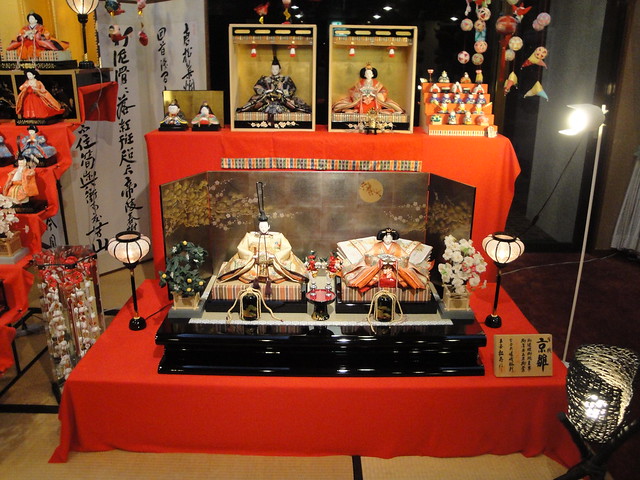 |
| 人吉球磨ひなまつり by alberth2 /flickr Hako-bina at Hitoyoshi-kuma Doll's Festival in Kumamoto Prefecture |
Raised cloth pictures called okiage(おきあげ) in Chikugo area are displayed together with hina dolls. Female samurai family members made the pictures as a side job in the Edo Period. They became common in ordinary houses after the Meiji Period.
 |
| okiage in Chikugo-Yoshii |
Padded pictures of hina dolls, kabuki actors and characters from fairy tales used to be made in Mizusawa(水沢) in Iwate Prefecture until around 1930. They are called Kukuri-bina(くくり雛) and date back to the Edo Period.
 |
| Kukuri-bina in Mizusawa |
Hako-bina and okiage at the Chikugo-Yoshii festival
Famous examples of hanging ornaments for the Doll Festival include Sagemon(さげもん) in Yanagawa City in Fukuoka Prefecture, Tsurushi-kazari(つるし飾り) in Inatori area in Shizuoka Prefecture and Kasafuku(傘福) in Sakata City in Yamagata Prefecure.
The ornaments include drawstring pouches, paper and fabric ornaments in the shape of various auspicious objects.
Yanagawa Hinamatsuri Sagemon Meguri(柳川雛祭り さげもんめぐり) in Yanagawa City, Fukuoka Prefecture is being from February 11th to April 3rd.
sagemon near Yanagawa Station
 |
| 柳川車站前拉麵店 by alberth2 /flickr sagemon in Yanagawa |
sagemon at Nishitetsu Tenzin Omuta Line Nishitetsu Yanagawa Station(西鉄柳川駅)
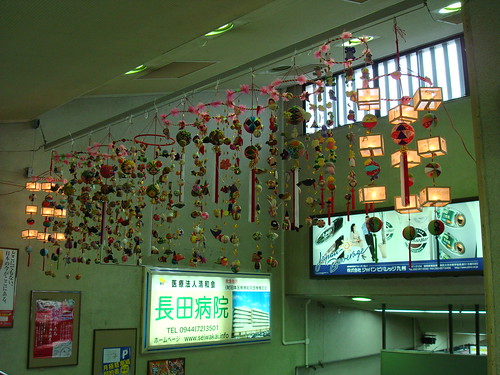 |
| 柳川車站 by alberth2 /flickr sagemon at Yanagawa Station |
sagemon at Nishitetsu Tenzin Omuta Line Nishitetsu Fukuoka (Tenjin) Station (西鉄福岡(天神)駅)
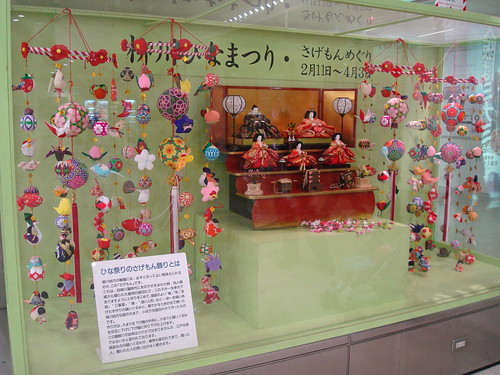 |
| 天神車站 by alberth2 /flickr sagemon at Fukuoka (Tenjin) Station |
Tsurushi-kazari at the Associa Hotel in Nagoya
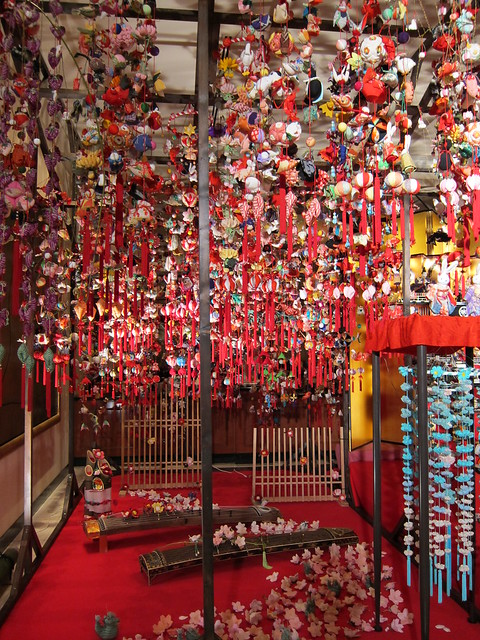 |
| Tsurushi-bina by Yuya Tamai /flickr Tsurushi-kazari in Nagoya |
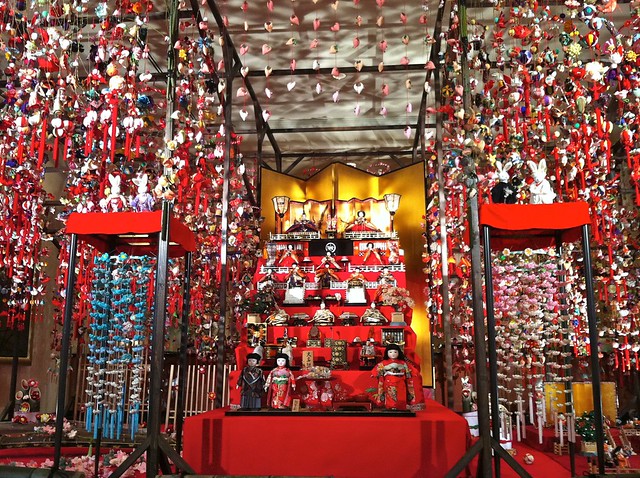 |
| Elaborate Hina Matusuri Display by rumpleteaser /flickr Tsurushi-kazari and hina dolls in Nagoya |
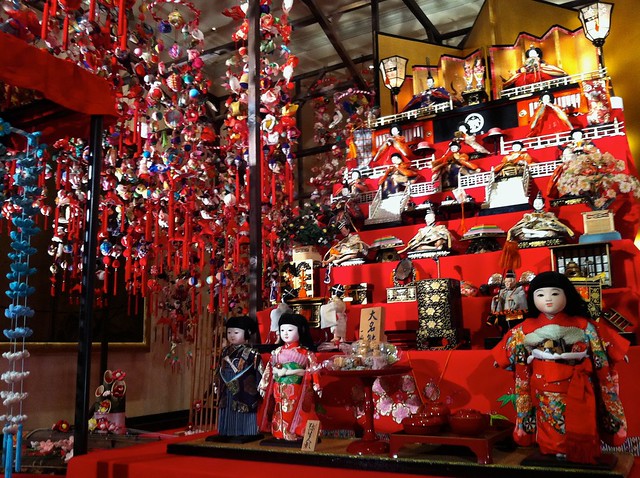 |
| Japanese Doll set for Hina Matsuri by rumpleteaser /flickr Tsurushi-kazari, hinadolls and Ichimatsu dolls in Nagoya |
 |
| Photo by Yokaphoto.net |
At Sagemon Meguri in Yanagawa, people dressed like hina dolls and children in traditional attire parade on the water in March every year.
The parade will be held on March 18th this year.
 |
| Photo by Yokaphoto.net |
 |
| Photo by Yokaphoto.net |
 |
| Photo by Yokaphoto.net |
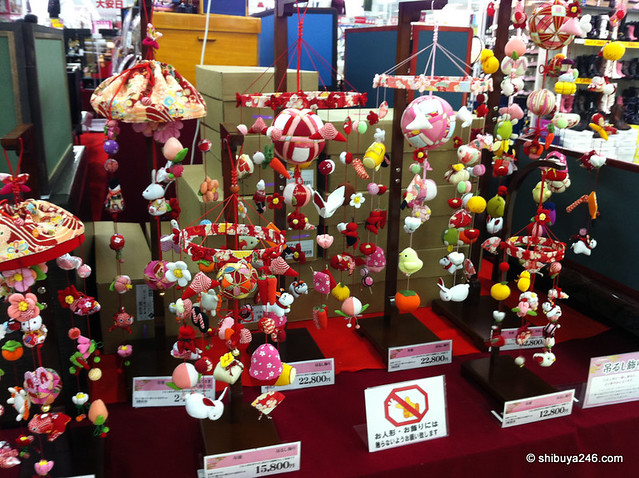 |
| Hina Matsuri by shibuya246 /flickr Ready-made tsurushi-kazari |
Ready-made tsurushi-kazari are sold.
Do-it-yourself kits for tsurushi-kazari are also sold.
Katsuura Doll's Festival(勝浦ひなまつり)
 |
| tomisaki shrine by Ali San /flickr Katsuura Doll's Festival |
Omi-hachiman City Museum(近江八幡市立資料館)
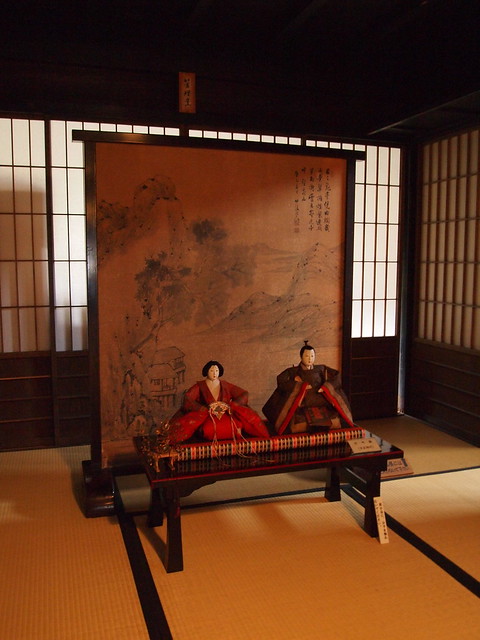 |
| 雛人形 by Kentaro Ohno /flickr |
kimekomi doll(木目込み人形) Head and body of a kimekomi doll are formed by placing mixture of paulownia wood powder and natural glue in wooden molds. The doll's body is grooved. Pieces of cloth for costume are tucked into grooves in the body.
 |
| ひな人形 (Hina-Ningyo/ Dolls) Japan Doll Festival by born1945 /flickr kimekomi hina dolls |
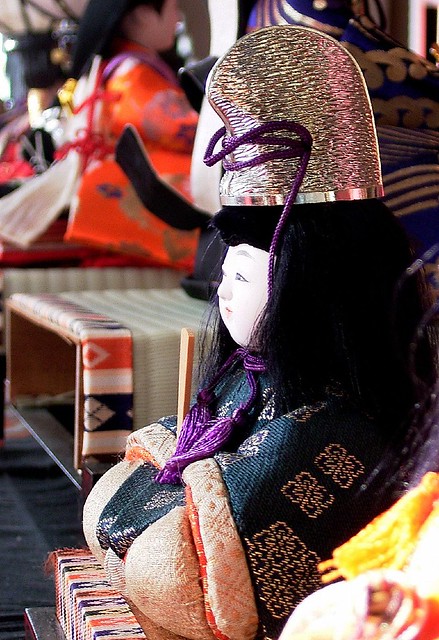 |
| hina doll : 雛人形 by OpenCage /flickr kimekomi hina doll |
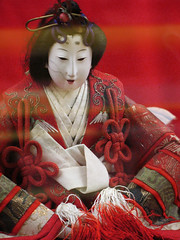 |
| old empress by panina.anna /flickr |
This old hina doll is the same as my grandmother's.

Thank you for sharing the colorful pictures and to explain everything so clearly. It is very interesting.
ReplyDeletePlease, may I ask you a question, Ichinen? I wanted to know: which confectionery belongs to the month of June and the which one to the peonies? I want to build the teahouse in the setting of the month of June, that's why. Thank you very much, Ilona
Typical confections of June in Japan are:
Delete(1) confections with a hydrangea(紫陽花,ajisai) motif
http://ichinen-fourseasonsinjapan.blogspot.com/2010/06/rainy-season-has-started.html
http://ichinen-fourseasonsinjapan.blogspot.com/2011/06/hydrangea2.html
Ajisai made by Honke Tsukimochi-ya Naomasa(本家月餅屋直正)
http://kyoto-wagasi.com/review/tukimoti_ajisai.html
(2) unripe ume(青梅,ao-ume) and loquat(枇杷,biwa)
http://ichinen-fourseasonsinjapan.blogspot.com/2010/05/unripe-ume-and-loquat.html
(3) confections with sweetfish(鮎,ayu) motifs
http://ichinen-fourseasonsinjapan.blogspot.com/2010/06/sweetfish.html
(4) Minazuki(水無月)
http://ichinen-fourseasonsinjapan.blogspot.com/2010/06/nagoshi-no-harae.html
(5) Japanese water iris(花菖蒲, hanashobu)
http://ichinen-fourseasonsinjapan.blogspot.com/2010/06/hanashoubuiris-ensata-var.html
(6) Himuro(氷室, icehouse) made by Taneya
http://ichinen-fourseasonsinjapan.blogspot.com/2010/07/start-of-mountain-climbing-season.html
(7) One of typical confections with a peony motif is Mizubotan(水牡丹).
http://kyoto-wagasi.com/a_sasaya_sho/sasaya_syo_kiwami_007.html
This is made by Sasaya Shoen(笹屋昌園).
Thank you for the detailed response. I hope you don't mind if I'm asking so much? I take a good look at the time.
ReplyDeleteAgain thank you, Ilona
Ilona, I'm glad these posts help you!
Delete